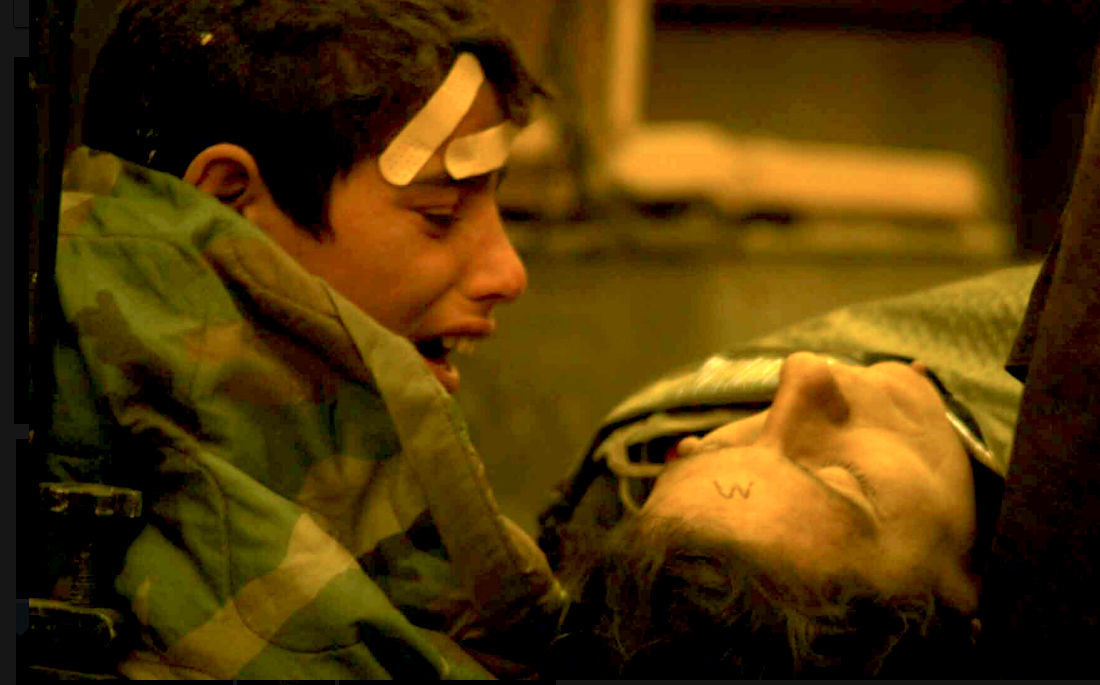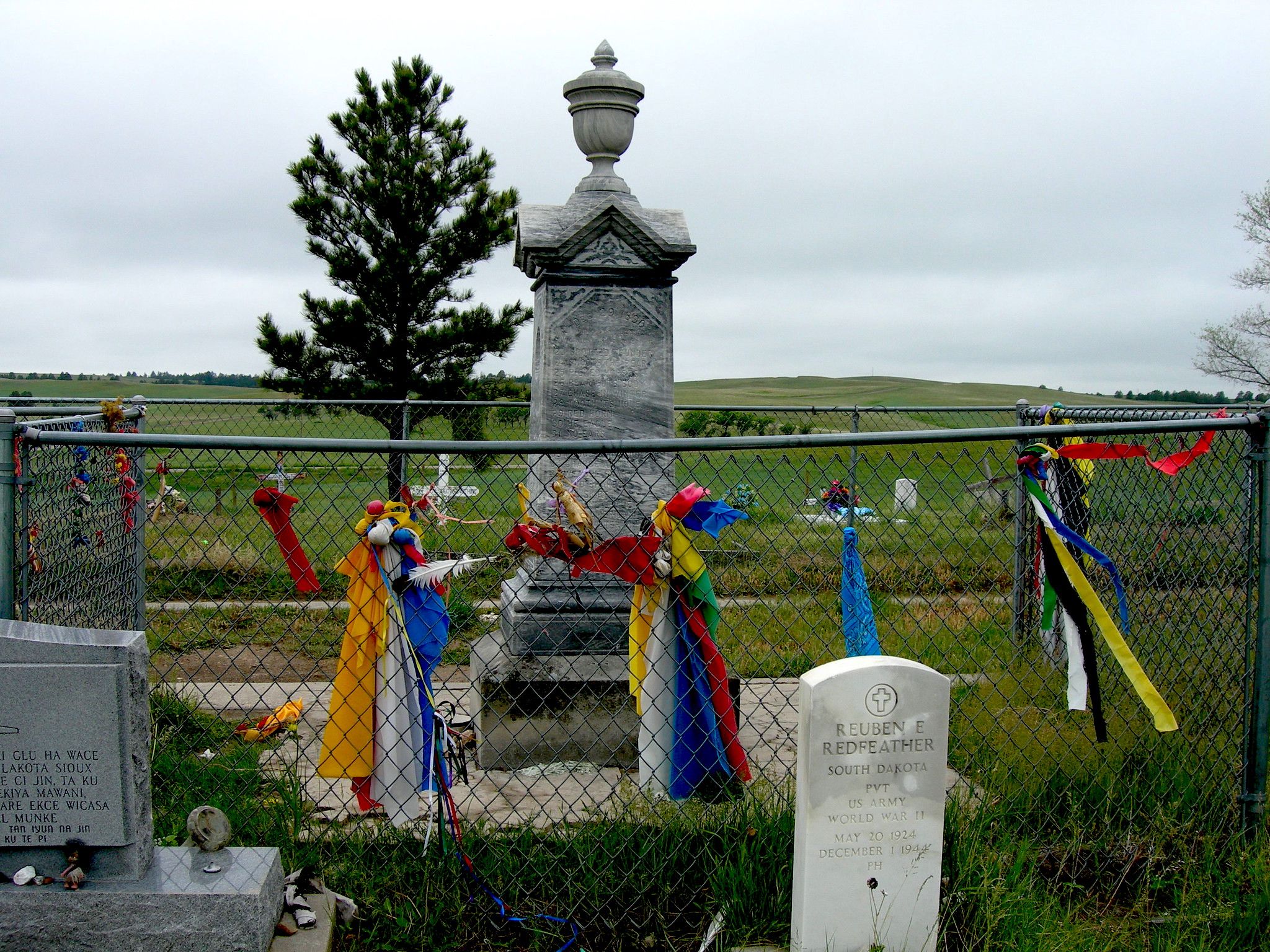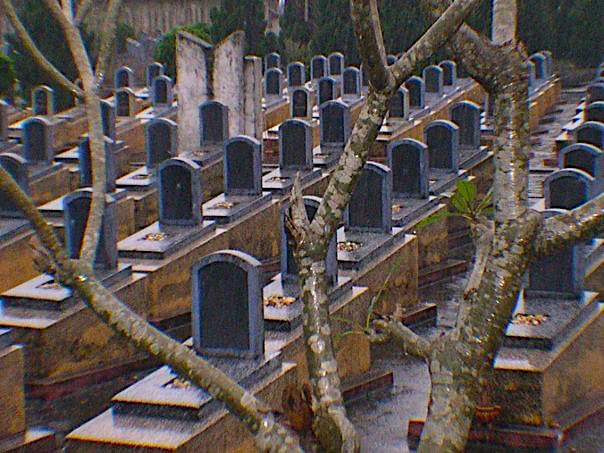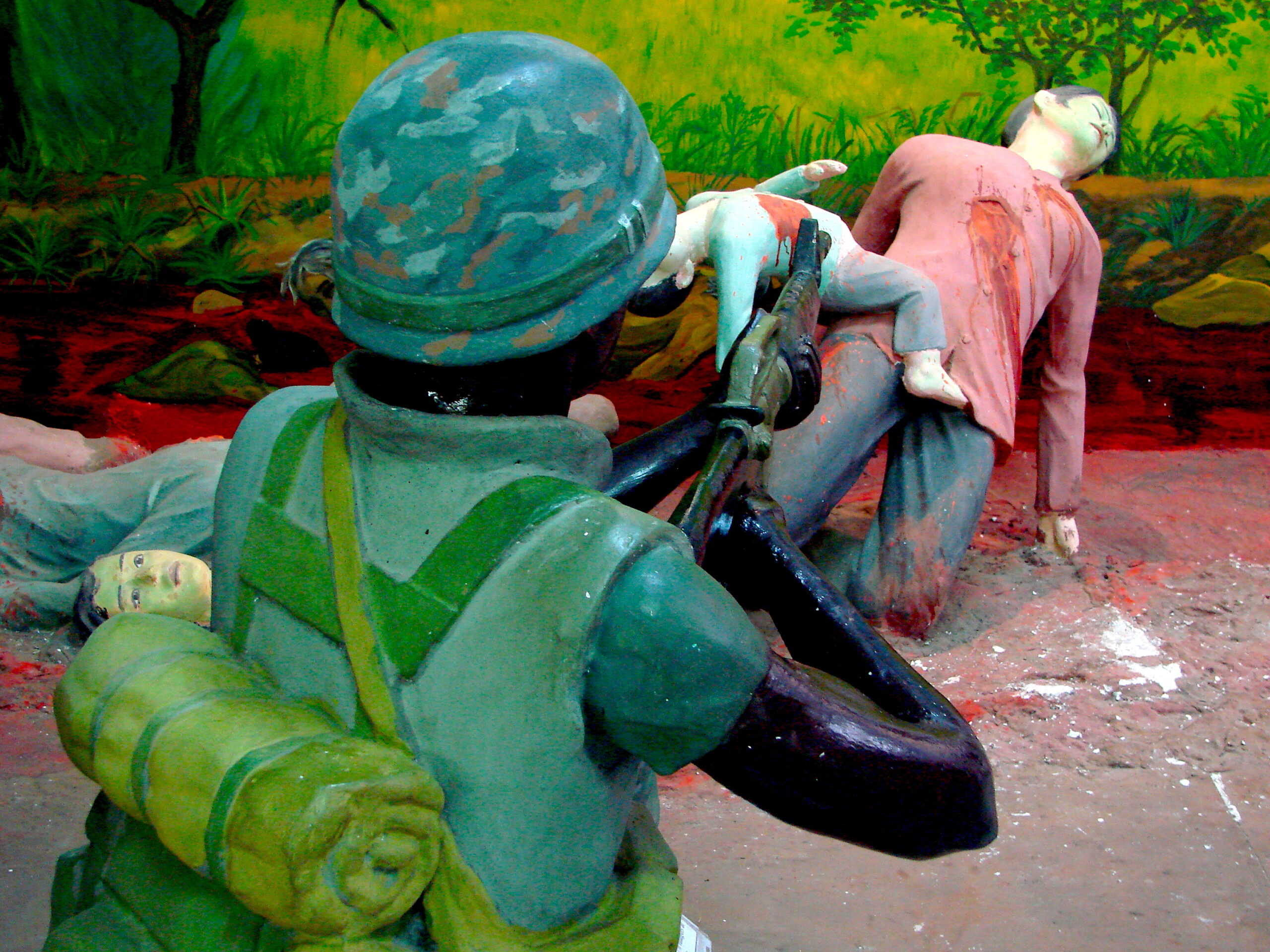A civilian deaths memorial could zig zag across the U.S., suggests Nick Turse. It could keep extending westwards, in a way that would spur Americans’ interest in their nation’s history and conflicts abroad.

An unidentified Iraqi boy grieves for an unidentified displaced Iraqi civilian killed in a firefight in Dhi Qar, Iraq, on March 26, 2003. (Mace M. Gratz, USMC, The U.S. National Archives)
 As a parting shot, on its way out of Afghanistan, the United States military launched a drone attack that the Pentagon called a “righteous strike.” The final missile fired during 20 years of occupation, that Aug. 29 airstrike averted an Islamic State car-bomb attack on the last American troops at Kabul’s airport. At least, that’s what the Pentagon told the world.
As a parting shot, on its way out of Afghanistan, the United States military launched a drone attack that the Pentagon called a “righteous strike.” The final missile fired during 20 years of occupation, that Aug. 29 airstrike averted an Islamic State car-bomb attack on the last American troops at Kabul’s airport. At least, that’s what the Pentagon told the world.
Within two weeks, a New York Times investigation would dismantle that official narrative. Seven days later, even the Pentagon admitted it. Instead of killing an ISIS suicide bomber, the United States had slaughtered 10 civilians: Zemari Ahmadi, a longtime worker for a U.S. aid group; three of his children, Zamir, 20, Faisal, 16, and Farzad, 10; Ahmadi’s cousin Naser, 30; three children of Ahmadi’s brother Romal, Arwin, 7, Benyamin, 6, and Hayat, 2; and two 3-year-old girls, Malika and Somaya.
The names of the dead from the Kabul strike are as important as they are rare. So many civilians have been obliterated, incinerated, or — as in the Aug. 29 attack — “shredded” in America’s forever wars.
 Who in the United States remembers them? Who here ever knew of them in the first place? Twenty years after 9/11, with the Afghan War declared over, combat in Iraq set to conclude, and President Joe Biden announcing the end of “an era of major military operations to remake other countries,” who will give their deaths another thought?
Who in the United States remembers them? Who here ever knew of them in the first place? Twenty years after 9/11, with the Afghan War declared over, combat in Iraq set to conclude, and President Joe Biden announcing the end of “an era of major military operations to remake other countries,” who will give their deaths another thought?
Americans have been killing civilians since before there was a United States. At home and abroad, civilians — Pequots, African Americans, Cheyenne and Arapaho, Filipinos, Haitians, Japanese, Germans, Koreans, Vietnamese, Cambodians, Laotians, Afghans, Iraqis, Syrians, Yemenis, and Somalis, among others — have been shot, burned, and bombed to death. The slaughter at Sand Creek, the Bud Dajo massacre, the firebombing of Dresden, the atomic bombing of Hiroshima, the My Lai massacre — the United States has done what it can to sweep it all under the rug through denial, cover-ups, and the most effective means of all: forgetting.
There’s little hope of Americans ever truly coming to terms with the Pequot or Haitian or Vietnamese blood on their hands. But before the forever wars slip from the news and the dead slide into the memory hole that holds several centuries worth of corpses, it’s worth spending a few minutes thinking about Zemari Ahmadi, Benyamin, Hayat, Malika, Somaya, and all the civilians who were going about their lives until the U.S. military ended them.
Names Remembered & Names Forgotten

The dead from the Massacre of Wounded Knee are buried here in Wounded Knee, South Dakota. (Jimmy Emerson, DVM, Flickr, CC BY-NC-ND 2.0)
Over the last 20 years, the United States has conducted more than 93,300 air strikes — in Afghanistan, Iraq, Libya, Pakistan, Somalia, Syria and Yemen — that killed between 22,679 and 48,308 civilians, according to figures recently released by Airwars, a U.K.-based airstrike monitoring group. The total number of civilians who have died from direct violence in America’s wars since 9/11 tops out at 364,000 to 387,000, according to Brown University’s Costs of War Project.
Who were those nearly 400,000 people?
There’s Malana. In 2019, at age 25, she had just given birth to a son, when her health began to deteriorate. Her relatives were driving her to a clinic in Afghanistan’s Khost Province when their vehicle was attacked by a U.S. drone, killing Malana and four others.
And Gul Mudin. He was wounded by a grenade and shot with a rifle, one of at least three civilians murdered by a U.S. Army “kill team” in Kandahar Province in 2010.
Then there was Gulalai, one of seven people, including three women — two of them pregnant — who were shot and killed in a Feb. 12, 2010, raid by Special Operations forces in Afghanistan’s Paktia Province.
And the four members of the Razzo family — Mayada, Tuqa, Mohannad, and Najib — killed in a Sept. 20, 2015, airstrike in Mosul, Iraq.
And there were the eight men, three women, and four children — Abdul Rashid as well as Abdul Rahman, Asadullah, Hayatullah, Mohamadullah, Osman, Tahira, Nadia, Khatima, Jundullah, Soheil, Amir, and two men, ages 25 and 36 respectively, named Abdul Waheed — who were killed in a Sept. 7, 2013, drone strike on Rashid’s red Toyota pickup in Afghanistan.
Then there were 22-year-old Lul Dahir Mohamed and her 4-year-old daughter, Mariam Shilo Muse, who were killed in an April 1, 2018, airstrike in Somalia.
Please Support Our Fall Fund Drive!
And between 2013 and 2020, in seven separate U.S. attacks in Yemen — six drone strikes and one raid — 36 members of the al Ameri and al Taisy families were slaughtered.
Those names we know. Or knew, if only barely and fleetingly. Then there are the countless anonymous victims like the three civilians in a blue Kia van killed by Marines in Iraq in 2003. “Two bodies were slumped over in the front seats; they were men in street clothes and had no weapons that I could see. In the back seat, a woman in a black chador had fallen to the floor; she was dead, too,” wrote Peter Maass in The New York Times Magazine in 2003. Years later, at The Intercept, he painted an even more vivid picture of the “blue van, with its tires shot out and its windows shattered by bullets, its interior stained with blood and smelling of death, with flies feasting on already-rotting flesh.”
Those three civilians in Iraq were all too typical of the many anonymous dead of this country’s forever wars — the man shot for carrying a flashlight in an “offensive” manner; the children killed by an “errant” rocket; the man slain by “warning shots”; the three women and one man “machine-gunned” to death; and the men, women and children reduced to “charred meat” in an American bombing.
Who were the 11 Afghans — four of them children — who died in a 2004 helicopter attack, or the “dozen or more” civilians killed in 2010 during a nighttime raid by U.S. troops in that same country? And what about those 30 pine-nut farm workers slaughtered a year later by a drone strike there? And what were the names of Mohanned Tadfi’s mother, brother, sister-in-law, and seven nieces and nephews killed in the U.S. bombing that flattened the city of Raqqa, Syria, in 2017?
Often, the U.S. military had no idea whom they were killing. It frequently carried out “signature strikes” that executed unknown people due to suspicious behavior. So often, Americans killed such individuals for little or no reason — like holding a weapon in places where, as in this country, firearms were ubiquitous — and then counted them as enemy dead.

U.S. soldier searches an Iraqi man during a patrol near the Syrian border on Aug. 10, 2005. (U.S. Army, Kyle Davis)
An investigation by Connecting Vets found that during a 2019 air campaign in Afghanistan’s Helmand province, for example, the threshold for an attack “could be met by as little as a person using or even touching a radio” or if an Afghan carrying “commercially bought two-way radios stepped into a home, the entire building would sometimes be leveled by a drone strike.”
Targeted assassinations were equally imprecise. Secret documents obtained by The Intercept revealed that, during a five-month stretch of Operation Haymaker — a drone campaign in 2011 and 2013 aimed at al-Qaeda and Taliban leaders along the Afghan-Pakistan border — 200 people were killed in airstrikes conducted to assassinate 35 high-value targets. In other words, nearly nine out of 10 people slain in those “targeted” killings were not the intended targets. So, who were they?
Even if targeting was ordinarily more accurate than during Operation Haymaker, U.S. policy has consistently adhered to the dictum that “military-age males” killed in airstrikes should automatically be classified as combatants unless proven innocent. In addition to killing people for spurious reasons, the U.S. also opted for allies who would prove at least as bad as, if not worse than, those they were fighting. For two decades, such American-taxpayer-funded warlords and militiamen murdered, raped, or shook-down the very people the U.S. government was supposedly protecting. And, of course, no one knows the names of all those killed by such allies who were being advised, trained, armed and funded by the United States.
Who, for instance, were the two men tied to the rear fender of a Toyota pickup truck in southeastern Afghanistan in 2012 by members of an Afghan militia backed by U.S. Special Operations forces? They were, wrote reporter Anand Gopal, dragged “along six miles of rock-studded road” until they were dead. Then their “bodies were left decomposing for days, a warning to anyone who thought of disobeying Azizullah,” the U.S.-allied local commander.
Or what about the 12 boys gunned down by CIA-backed militiamen at a madrassa in the Afghan village of Omar Khail? Or the six boys similarly slain at a school in nearby Dadow Khail? Or any of the dead from 10 raids in 2018 and 2019 by that same militia, which summarily executed at least 51 civilians, including boys as young as eight years old, few of whom, wrote reporter Andrew Quilty, appeared “to have had any formal relationship with the Taliban”?
How many reporters’ notebooks are filled with the unpublished names of just such victims? Or counts of those killed? Or the stories of their deaths? And how many of those who were murdered never received even a mention in an article anywhere?
Last year, I wrote 4,500 words for The New York Times Magazine about the deteriorating situation in Burkina Faso. As I noted then, that nation was one of the largest recipients of American security aid in West Africa, even though the State Department admitted that U.S.-backed forces were implicated in a litany of human-rights abuses, including extrajudicial killings.
What never made it into the piece was any mention of three men who were executed in two separate attacks. On May 22, 2019, uniformed Burkinabe troops arrived in the village of Konga and took two brothers, aged 38 and 25, away in the middle of the night. The next day, a relative found them on the side of the road, bound and executed. Most of the family fled the area. “The Army came back a week later,” a relative told me. “My uncle was the only one in our family who stayed. He was shot in broad daylight.” Such deaths are ubiquitous but aren’t even factored into the 360,000-plus civilian deaths counted by the Costs of War project, which offers no estimate for those killed in America’s “smaller war zones.”
Build the Wall!

A Vietnamese graveyard from the war against the U.S. (Joe Lauria)
We live in a world filled with monuments celebrating lives and deaths, trailblazers and memorable events, heroes and villains. They run the gamut from civil rights leader Martin Luther King, Jr., and women’s rights pioneers to the chieftains of the American Confederacy and Belgium’s King Leopold.
In the United States, there’s no shortage of memorials and monuments commemorating America’s wars and fallen soldiers. One of the most poignant lists the names of the American military dead of the Vietnam War. Initially derided by hawkish veterans and conservatives as a “black gash of shame” and a “nihilistic slab,” it’s now one of the most celebrated monuments in Washington, D.C. More than 58,000 men and women are represented on the visually arresting black granite walls of the Vietnam Veterans Memorial.
Vietnam itself has no shortage of monuments of its own. Many are Soviet-style memorials to those who died defeating the United States and reuniting their country. Others are seldom-seen, tiny memorials to massacres perpetrated by the Americans and their allies. No one knows how many similar cenotaphs exist in Iraq, Syria, Yemen, and other forever-war countries, but in 2017, journalist Emran Feroz found just such a memorial in Afghanistan’s Wardak Province — a remembrance of five civilians slain in drone strikes during 2013 and 2014.
There have been other attempts to memorialize the civilian dead of the forever wars from art installations to innovative visual protests to virtual commemorations.

A diorama in the museum of the My Lai massacre memorial site, near Quang Ngai, Vietnam, depicts the up-close nature of the massacre. (Adam Jones, CC BY-SA 3.0, Wikimedia Commons)
In 2018, after then-President Trump signed a bill approving the construction of a Global War on Terrorism Memorial, Peter Maass proposed, even if only half-seriously, that the bullet-riddled blue Kia van he saw in Iraq should be placed on a pedestal on the National Mall. “If we start building monuments that focus our attention on the pitiless killing of civilians in our wars,” he wrote, “maybe we would have fewer wars to fight and less reason to build these monuments.”
A blue Kia on the National Mall would be a good starting point. But if we’re ever to grasp the meaning of the post-9/11 wars and all the conflicts that set the stage for them, however, we may need a wall as well — one that starts at the Kia and heads west. It would, of course, be immense. The Vietnam Veterans Memorial spans a total of 400 feet. The celebrated Vietnam War photographer Philip Jones Griffiths observed that a wall for the Vietnamese dead, counting combatants, of the American War would be nine miles long.
The Vietnam Veterans Memorial is arrayed in a unique chronological format, but the Civilian Deaths Memorial could begin with anyone. The last civilians killed by the United States as part of its 2001 to 2021 Afghan War – Zemari Ahmadi, Zamir, Faisal, Farzad, Naser, Arwin, Benyamin, Hayat, Malika, and Somaya – could lead it off. Then maybe Abdul Rashid and the 14 passengers from his red pick-up truck. Then Malana, Gul Mudin, Gul Rahim, Gulalai, Mayada, Tuqa, Mohannad, Najib, Lul Dahir Mohamed, and Mariam Shilo Muse. Then maybe Ngo Thi Sau, Cao Muoi, Cao Thi Thong, Tran Cong Chau Em, Nguyen Thi Nhi, Cao Thi Tu, Le Thi Chuyen, Dang Thi Doi, Ngo Thi Chiec, Tran Thi Song, Nguyen Thi Mot, Nguyen Thi Hai, Nguyen Thi Ba, Nguyen Thi Bon, Ho Thi Tho, Vo Thi Hoan, Pham Thi Sau, Dinh Van Xuan, Dinh Van Ba, Tran Cong Viet, Nguyen Thi Nham, Ngo Quang Duong, Duong Thi Hien, Pham Thi Kha, Huynh Van Binh, Huynh Thi Bay, Huynh Thi Ty, Le Van Van, Le Thi Trinh, Le Thi Duong, and Le Vo Danh and her unborn child, all slaughtered in the tiny South Vietnamese village of Phi Phu by U.S. troops (without any of the attention accorded to the My Lai massacre). They could be followed by the names of, or placeholders for, the remaining 2 million Vietnamese civilian dead and by countless Cambodians, Laotians, Afghans, Iraqis, Somalis and Yemenis.
The Civilian Wall could be built in a zig-zag fashion across the U.S. with the land in its way — homes and businesses, parks and roadways — seized by eminent domain, making Americans care about civilian deaths in ways that news articles never could.
When you lose your home to a slab of granite that reads “Pequot adult, Pequot adult, Pequot child…” 500 times, you may actually take notice. When you hear about renewed attacks in Iraq or drone strikes in Somalia or a Navy SEAL raid gone awry in Yemen and worry that the path of the wall might soon turn toward your town, you’re likely to pay far more attention to America’s conflicts abroad.
Obviously, a westward-traveling wall memorializing civilian carnage is a non-starter in this country, but the next time you hear some fleeting murmur about a family wiped out by a drone strike or read a passing news story about killings by a U.S.-backed militia, think about that imaginary wall and how, in a just world, it might be headed in your direction. In the meantime, perhaps the best we can hope for is Maass’s proposal for that blue Kia on the Mall. Perhaps it could be accompanied by the inscription found on a granite slab at the Heidefriedhof, a cemetery in Dresden, Germany, the site of a mass grave for civilians killed in a 1945 U.S. and British fire-bombing. It begins: “How many died? Who knows the number?”
Nick Turse is the managing editor of TomDispatch and a fellow at the Type Media Center. He is the author most recently of Next Time They’ll Come to Count the Dead: War and Survival in South Sudan and of the bestselling Kill Anything That Moves.
This article is from TomDispatch.com.
The views expressed are solely those of the author and may or may not reflect those of Consortium News.
Please Support CN’s
Fall Fund Drive!


Excellent piece by Nick Turse. After all of the pain, suffering and death the government of this country and those “pulling the triggers” (on our behalf) have delivered to “others” everywhere, it baffles me that the carnage continues unabated – shameful this murderous unconscious nation. We are soul-less and brutal. We will get ours – karma.
Amazing and more than a needed, indispensable article. All the credit to the author for gathering all this info.
Thank you Nick Turse for posting this. I like your idea of an imaginary wall, if only it could be although many(most) Americans wouldn’t understand the metaphor.
I hope that this makes a difference. It definitely was needed. Nothing seems to penetrate the wall of US citizen disinterest. The US Gov is more subtle with killing it’s own. The current “pandemic” is a prime example. Blaming China for Gain of Function increased lethality is projecting US guilt to China. ….not to say they don’t do the same. But the continued repeat of invasions and social destruction of countries has to stop. Libya had one of the highest, if not the highest living standards in the world. The reported lethal anal thrust of the sword (knife) up Gadaffi’s anus, may be an appropriate metaphor for US “diplomacy”.
Very well said !
> Libya had one of the highest, if not the highest living standards in the world.
I think you meant “in Africa”, in which case you are right. Of course, the standard of living of Libyans was not as high as for most people in wealthy industrialized European countries, or their counterparts in North America, Australia & New Zealand, or Japan.
Murder in other countries perpetrated by the wealthy, our so-called government, the media and the MIC? Most Americans could care less – they’re too busy playing games, texting and talking on their cell phones…
Read Nick’s brilliant work “Kill Anything That Moves.”
It is difficult to describe the experience of reading that book in anything other than “book review cliches”–“heart-rending, wrenching, numbing” etc.
People who think they know the “real story” about Vietnam should read Nick’s book, before they set their views in concrete.
Great work, Nick Turse!